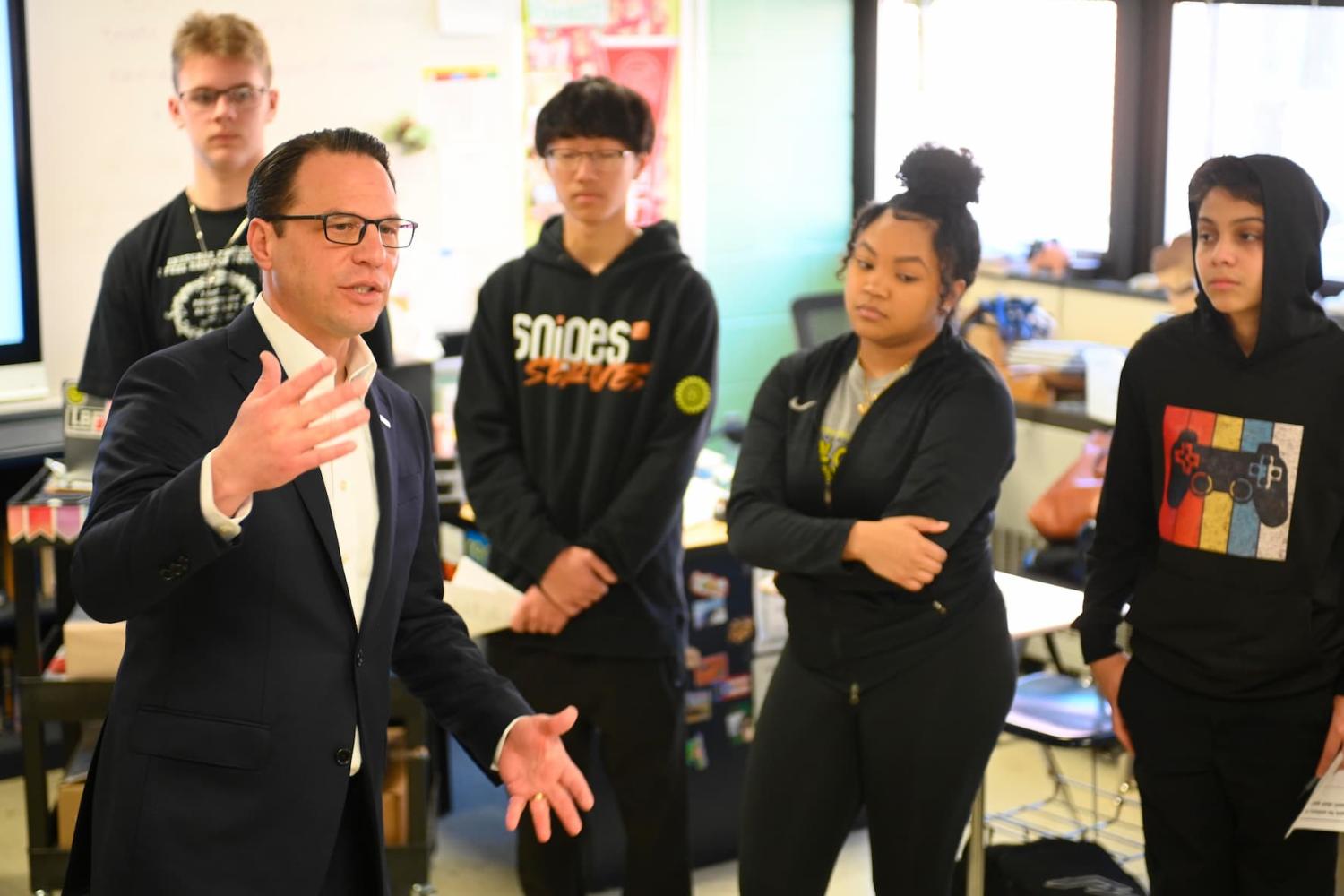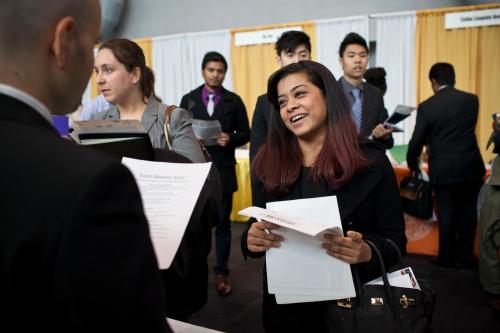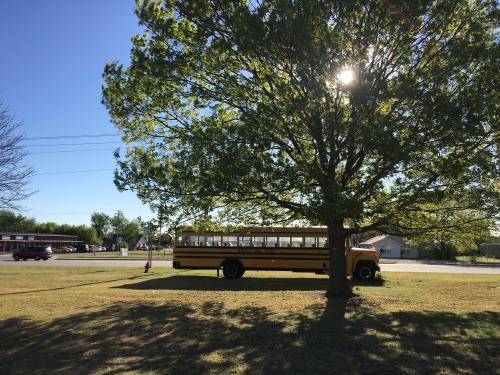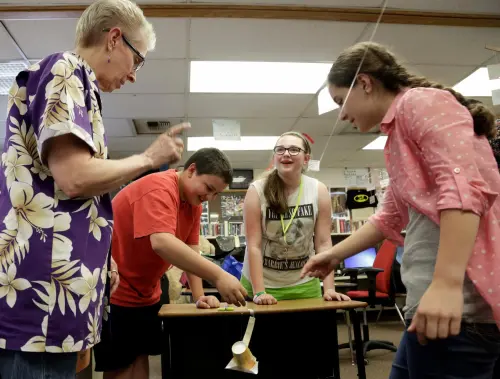This blog is part of a Brown Center series called State of the States: Gubernatorial Policy Priorities in 2023, in which Brookings experts analyze the education policy proposals outlined in governors’ 2023 State of the State addresses.
The right to a free public K-12 education in the United States is enshrined in state constitutions. As a result, states play the lead role in K-12 education policy. For example, states determine how local public schools are funded (in large part, by providing significant funding to local districts), how educators are licensed to teach, and what students should learn and by when. States also administer consequential standardized exams and determine high school graduation requirements.
In sum, state governments hold significant sway over what K-12 education looks like across the United States. As part of our series analyzing governors’ “State of the State” addresses, I examine state legislative priorities for PK-12 education with an eye towards identifying promising education policy priorities. I also highlight research that can support policymakers and practitioners working to develop these priorities and ideas into new policies and programs.
Strengthening the teaching profession by increasing pay and improving the pipeline
Governors in 24 states proposed initiatives aimed at strengthening the teacher workforce in one form or another—a priority shared by Republican and Democratic lawmakers alike. This is almost certainly in response to concerns over teacher shortages in public schools and broader concerns about the plight of the teaching profession. That governors and state legislatures are taking these concerns seriously and thinking about how to strengthen the teaching profession is unequivocally a good thing. On top of concerns over localized teacher shortages, teachers are stressed, and morale is low. Given the vital role that teachers play in our society, it’s critical that policymakers attend to the myriad issues facing the teaching profession.
Most of the governors who talked about strengthening the teaching profession took direct aim at improving teacher compensation. This is sensible since teachers are significantly underpaid relative to other professions that require similar levels of post-secondary education. Some states like West Virginia and Kentucky are raising all teachers’ salaries by 5%. Other states like South Carolina are raising salaries for all teachers but concentrating the benefits for early career teachers with the goal of raising starting salaries to $50,000 by 2026. South Carolina and Virginia have also proposed offering one-time retention bonuses for teachers.
This is a good start, but teacher compensation reform can and should go further. First, of the states proposing to increase teacher pay, only a few focused on raising the floor to ensure that starting salaries are attractive to job candidates. As I discuss below, many states are also considering ways to increase the number of people training to become teachers given mounting evidence that the teacher pipeline is shrinking. Increased starting salaries can be an important lever to encourage more folks to enter the profession. Raising starting salaries can also help improve retention rates among early career teachers as turnover rates are highest in teachers’ first few years on the job. Second, as my colleague and other scholars have noted, teacher shortages are localized phenomena and typically concentrated in certain subject areas, districts, and schools. If compensation reform is being designed (in part) to stem the threat of harmful teacher shortages, policymakers should be working to create pay structures that attract teachers to the subject areas and schools most in need.
Many governors also proposed programs aimed at strengthening the teacher pipeline. A few states proposed developing or expanding grow-your-own programs (GYO) that aim to recruit local community members—including high school and local college students, paraprofessionals and other school-based staff, parents, and/or other adults looking to change careers—to train to teach in their local schools. For example, Gov. Tony Evers in Wisconsin proposed $5 million in grants to support districts in developing GYO programs. These programs show promise for diversifying the teaching workforce and improving teacher retention. If these initiatives successfully move through state legislatures, policymakers and practitioners should ensure that key features of GYO programs are integrated into program design.
As policymakers consider other ways to ensure the short- and long-term health of the teaching profession, a top priority should be improving working conditions for teachers.
Further, as states consider ways to strengthen the teacher pipeline, it is critical that policymakers work to reduce the upfront cost of teacher preparation for prospective teachers—a strategy that can also help attract more people of color into the profession. This can take the form of loan forgiveness and/or scholarship programs that cover the cost of teacher preparation in exchange for commitments to teach for a certain number of years.
As policymakers consider other ways to ensure the short- and long-term health of the teaching profession, a top priority should be improving working conditions for teachers. In surveys, stress (notably, not pay) topped the reasons former educators gave for leaving the profession. Poor working conditions push educators out of the profession—a dynamic that places disproportionate stress on high-needs schools. Relatedly, efforts to strengthen the teacher pipeline should also aim to bolster the attractiveness of the teaching profession—in the form of increased compensation, as well as more professional autonomy and opportunities for career advancement.
Expanding families’ access to affordable childcare and universal pre-K
More than one third of governors announced statewide efforts to expand access to childcare and early learning opportunities. Many governors are specifically looking to expand access to pre-K—with governors in Kentucky, Illinois, and Michigan proposing plans to make public pre-K universal in their states. For example, Gov. J. B. Pritzker in Illinois announced an ambitious plan to make pre-K universally available to all 3- and 4-year-olds, and Gov. Gretchen Whitmer of Michigan is pushing to make preschool universal for 4-year-olds by 2027. To date, only 3 states and the District of Columbia have universal pre-K programs—a glaring gap that many families struggle to fill. And efforts to create universal pre-K programs are well supported by a large body of research. As states work to design universal pre-K programs, a top priority for policymakers is to ensure that existing programs are scaled while maintaining quality. Policymakers also need to increase salaries for preschool teachers who are grossly underpaid relative to their (also underpaid) K-12 counterparts. Finally, states should be attentive to the ways that expanding universal pre-K can unintentionally create additional financial pressures for already-strapped private child-care providers.
Several governors also proposed efforts to improve access to affordable childcare for families. For example, Gov. Kathy Hochul in New York proposed increasing income eligibility limits for statewide programs that subsidize (either in part or fully) the cost of childcare. The intention here is good—the high cost of childcare causes many families to choose lower-quality options or drop out of the workforce temporarily. However, efforts to expand eligibility without additional public investment in childcare programs may only increase demand for childcare slots while supply remains stubbornly low.
In Illinois, where lawmakers increased eligibility for childcare subsidies last summer, Gov. Pritzker proposed a publicly funded initiative to increase salaries for childcare teachers (who are also unacceptably underpaid). This marks an important first step towards increasing public investment in childcare that I hope other states will take notice of and follow suit. This is also an area desperately in need of more federal investment, although the prospects of a bipartisan effort to bolster the childcare industry seem low.
Educational savings accounts or voucher programs? Either way, a waste of taxpayers’ money
A number of Republican governors are pushing to expand private school choice via universal education savings accounts (ESAs) or other similar scholarship programs. ESAs are akin to private school vouchers but are far less restrictive. With an ESA, families are given access to a government-administered and funded savings account with money that can be used to educate their child. Arizona’s ESA, for example, provides families with up to $7,000 annually. Most ESAs can be used for private school tuition, homeschool related costs, and a broad array of other educational expenses. Importantly, the recent wave of legislative efforts aims to make eligibility for ESAs universal (as opposed to earlier voucher programs like those in Milwaukee and D.C. that specifically targeted low-income families enrolled in public schools). Based on my reading, expanding this type of private school choice is bad for public education and a huge waste of taxpayers’ dollars. Let me explain why.
Setting aside the question of whether taxpayers should have access to a portion of public education funds to subsidize private options or the cost of homeschooling, it is disingenuous to cloak this policy under the guise of promoting choice when the primary beneficiaries are those who never opted into public schools in the first place.
Despite politicians’ claims that ESAs will give more families choice (including in the form of private and religious schools), ESAs do not meaningfully achieve that goal by a long shot. First, ESAs do not provide enough money to cover most private school tuitions, meaning only families that can afford to cover the remaining cost of private school tuition will reap the benefits of “choice” under these programs. It’s better to think of these programs as subsidizing private school tuition for families that can already afford to send their kids to private school. And early data bears this out—in Arizona, 75% of applicants to their ESA program never attended public schools. Estimates from legislative analysts in Iowa, where Gov. Kim Reynolds recently signed a bill establishing a universal ESA program, project that the vast majority of families who would benefit from the program in its first few years are those that never attended public schools. Setting aside the question of whether taxpayers should have access to a portion of public education funds to subsidize private options or the cost of homeschooling, it is disingenuous to cloak this policy under the guise of promoting choice when the primary beneficiaries are those who never opted into public schools in the first place. It’s for these reasons that education historian Jack Schneider and journalist Jennifer Berkshire argue that we should understand this new wave of unrestricted private school choice as a giant transfer of wealth to already well-off families (or as they call it, a “reverse Robin Hood scheme”).
Another important critique of the Republican rhetoric around ESAs is that many families—including, importantly, families that live in rural areas—don’t have any school choices besides their local public schools (other than to possibly homeschool their child). While 82% of families have access to one or more private elementary schools within a 5 mile radius, that number drops to only 34% for families living in rural areas. In Iowa, 42 out of the state’s 99 counties do not have any private schools. In Utah (where legislatures also recently established a universal ESA program), most zip codes do not have a private school. In fact, resistance from rural communities stymied Oklahoma’s efforts to establish a statewide ESA program last year.
Finally, I want to underscore two final points against creating statewide ESA programs. First, most evidence suggests that statewide voucher programs (ESAs’ more restrictive predecessor) do not boost academic achievement—and in some cases, students may be left worse off. Second, students attending private schools do not have the same civil rights protections as students attending public schools. Outright discrimination against LGBTQ+ students and families—which has been documented in private religious schools across the country—has been a particularly malicious aspect of the current school choice movement. Private schools can discriminate using their admissions policies and/or programmatic offerings—two aspects of schooling that are heavily regulated in the public sector and under-regulated in the private education sector. State legislatures can integrate anti-discrimination provisions into their ESA bills mandating that private schools accepting public dollars cannot discriminate against certain vulnerable groups, but most have chosen not to do so.
Summary
Governors across the country are taking seriously the threat of teacher shortages and a weakened teaching profession, but at the same time (and in Utah, in the same bill!) many governors seek to undermine public education with the expansion of private school subsidies that primarily benefit affluent families. The push to establish expensive and wasteful universal ESA accounts is especially pernicious in the context of a public education system that underpays its teachers and has yet to provide universal preschool to all families with young children—not to mention a childcare system that is on the brink of collapse and desperately in need of public investment. Investing in any of those efforts, rather than funding a push to expand private school choice for the affluent few, would be money better spent.





